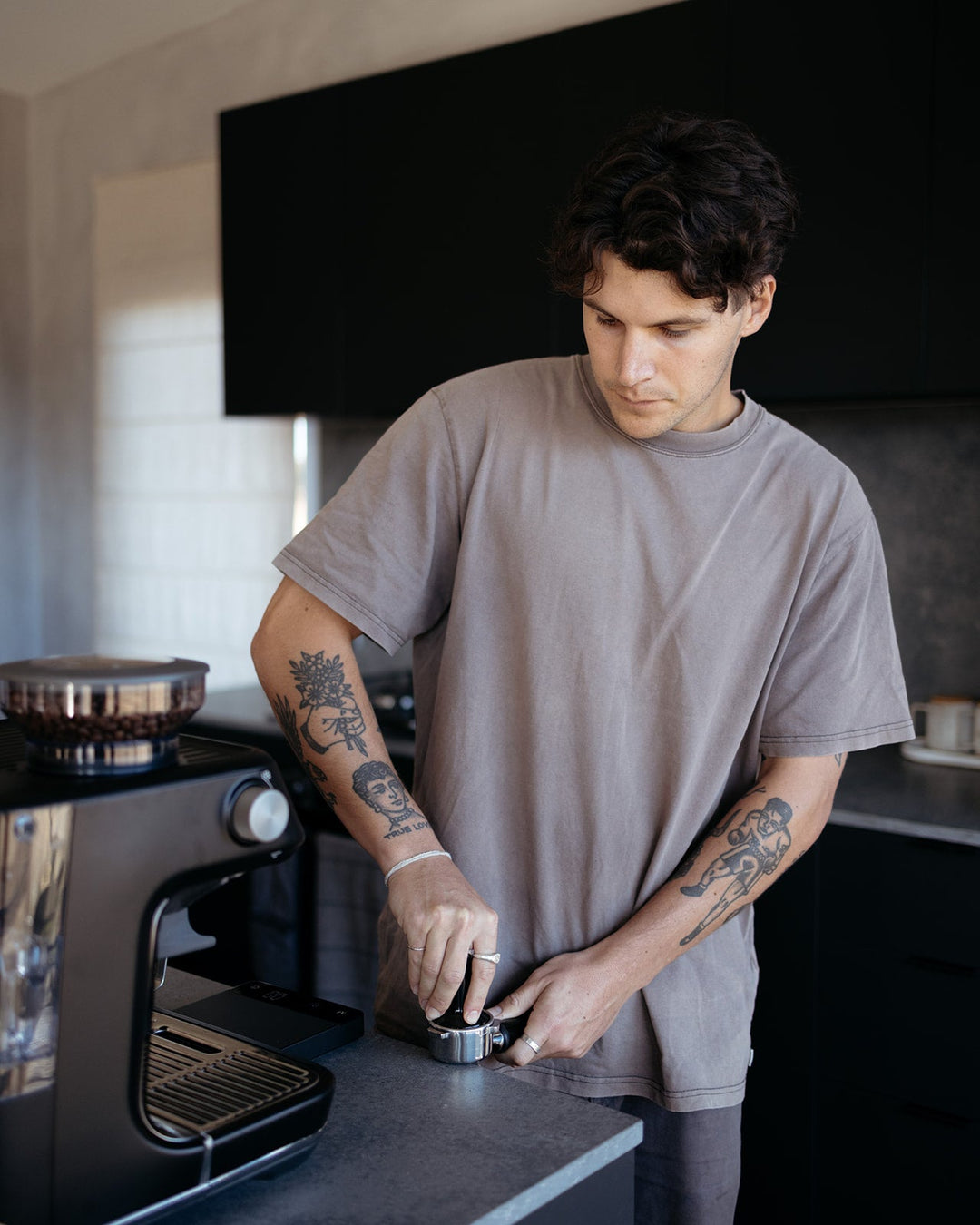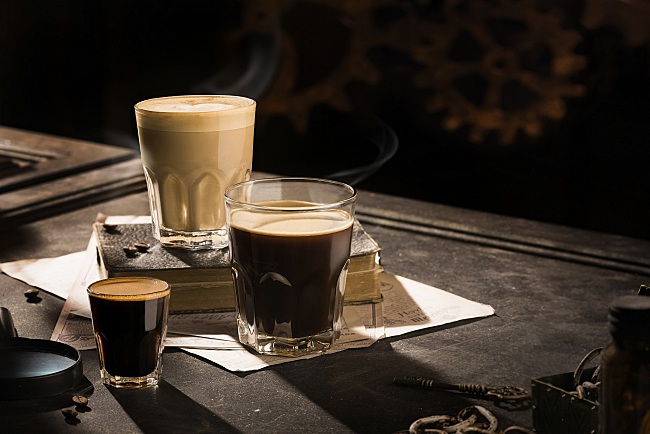The Coffee Lover’s Guide to SOE Single Origin Espresso Varieties
The Coffee Lover’s Guide to SOE Single Origin Espresso Varieties
Blog Article
Recognizing Coffee Beans: the Journey From Coffee to Blended Coffee Beans

The Beginnings of Coffee: A Worldwide Viewpoint
While you could think about coffee as a contemporary staple, its beginnings map back centuries, linking with cultures around the world. The story begins in Ethiopia, where legend claims a goat herdsman called Kaldi found the invigorating results of coffee beans after observing his goats frolicking vigorously after consuming them. This triggered rate of interest, bring about coffee's spread to Arab investors who valued the brewed drink. By the 15th century, it got to Persia, Egypt, and Turkey, where coffeehouses ended up being social centers for discussion and culture.
As profession courses broadened, coffee made its way to Europe in the 17th century, quickly acquiring popularity. It changed from a mystical drink into an everyday ritual, motivating events and intellectual exchanges. Each culture added its unique twist to coffee preparation, enriching its background. This worldwide trip highlights how coffee links us, going beyond boundaries and joining diverse traditions via an easy bean.
Farming and Harvesting of Espresso Beans
As coffee's trip developed, the focus shifted to the growing and harvesting of particular bean ranges, specifically those made use of for espresso. You'll locate that espresso beans usually originate from Arabica or Robusta plants, each offering unique flavors. The suitable growing problems consist of high elevations and rich, well-drained soil, which enhance the beans' quality.
Throughout the harvest, choosing approaches vary. In some regions, employees hand-pick ripe cherries, guaranteeing only the most effective fruit mosts likely to handling. In various other areas, mechanical farmers are utilized, particularly on bigger farms. When the cherries reach peak ripeness for optimum taste., timing is vital; you want to gather.
When collected, the beans are prepared for handling, which is necessary in identifying their final taste. Understanding the farming and gathering processes provides you insight into what enters into your preferred coffee, enhancing your appreciation for each and every mug.
Handling Techniques: From Cherry to Bean
Currently that you have actually found out about harvesting coffee beans, allow's discover exactly how those cherries transform right into the coffee beans you enjoy. You'll see just how various harvesting techniques influence flavor, adhered to by the important steps of fermentation and drying out. Ultimately, we'll damage down the milling and grading procedure that identifies your coffee's high quality.
Harvesting Techniques Clarified
When it comes to coffee, recognizing harvesting techniques is essential, given that they straight impact the taste and high quality of the beans you enjoy. Selective selecting entails hand-picking just ripe cherries, guaranteeing you get the best top quality beans. Ultimately, the choice of gathering method can greatly influence your coffee experience, so it's worth knowing just how those beans made it to your cup.
Fermentation and Drying
After harvesting, the next action in handling coffee beans play a significant role in forming their taste. You'll locate that fermentation is vital, as it assists damage down the mucilage bordering the beans, improving their preference account. Depending upon the approach, this process can last from a few hours to a number of days, with varying results based upon temperature and humidity.
As soon as fermentation is total, drying adheres to, which is equally crucial. You can pick from sun-drying or mechanical drying out methods. Sun-drying allows the beans to take in tastes from the environment, while mechanical drying out assurances constant wetness levels no matter climate. Proper drying out is vital to prevent mold and maintain the beans' top quality, ultimately influencing your cup of coffee.
Milling and Grading Process
As fermentation and drying out established the phase for taste development, the milling and grading process warranties that only the most effective coffee beans make it to your cup. This phase entails eliminating the external layers of the coffee cherry, consisting of the parchment and husk. After milling, the beans are sorted by size and weight, making sure a consistent high quality. You'll discover that grading helps determine flaws and classify beans, which affects taste and fragrance. High-quality beans obtain a greater grade, causing a richer coffee experience. Once graded, the beans await packaging and shipping, maintaining their unique features. This precise process is vital for delivering the exceptional taste you enjoy in every sip of your favorite brew.
Roasting Strategies: Unlocking Taste Prospective
When you roast coffee beans, the method you choose can drastically impact the pop over to this site taste profile. Understanding the partnership between time, temperature level, and roasting strategies is key to disclosing the possibility of your brew. Let's check out just how these components collaborated to produce the excellent cup.
Roasting Methods Described
While you might assume that all coffee toasting approaches generate the very same outcomes, the fact is that each method exposes special flavor potentials in the beans. Drum toasting uses a turning drum to uniformly disperse heat, boosting caramelization and creating a well balanced taste. Air roasting, on the other hand, flows warm air around the beans, advertising a lighter roast with obvious acidity.

Influence On Flavor Account
Different toasting techniques not only influence the process yet also significantly influence the flavor profile of the coffee beans. When you pick a light roast, you'll experience intense acidity and flower notes, showcasing the bean's beginning. On the other hand, a medium roast equilibriums acidity with sweetness, typically revealing chocolatey undertones. Dark roasts, on the other hand, highlight vibrant, smoky tastes, sometimes concealing the bean's unique features. Each method exposes various oils and substances, bring about a large range of flavors. By trying out with different toasting designs, you can find which profiles resonate with your taste buds. Recognizing these nuances aids you appreciate the creativity behind your cup of coffee, boosting your total experience with every sip.
Time and Temperature Factors
To release the full flavor possibility of coffee beans, both time and temperature level during the roasting process play significant duties. When toasting, you'll discover that higher temperatures can quickly develop tastes, but if you hurry it, you could wind up with burned notes. On the other hand, reduced temperatures permit for a more steady flavor development, showcasing the beans' one-of-a-kind features.

Timing is equally as crucial; extending the roast too long can cause a loss of level of acidity and illumination, while too brief a roast might leave the beans underdeveloped. Locating that pleasant spot requires method and experimentation. By readjusting these aspects, you can expose the rich, complicated flavors concealed within each bean, developing a truly impressive coffee experience.
The Art of Blending: Crafting One-of-a-kind Coffee Accounts

Beginning by selecting a base coffee that provides a strong foundation. An intense Ethiopian bean can bring fruitiness, while an abundant Brazilian coffee includes body.
As you mix, remember that each combination narrates. You're not simply making coffee; you're producing an experience. So, take your time, taste frequently, and appreciate the trip of uncovering your signature blend.
Developing Approaches: How Prep Work Impacts Taste
Mixing coffee opens up a domain of taste possibilities, however how you brew that mix can considerably affect your final mug. Various brewing techniques draw out one-of-a-kind tastes and fragrances, so it's important to choose carefully. A French press permits this post oils and sediments to continue to be, developing an abundant, robust experience. On the various other hand, a pour-over highlights the coffee's quality and brightness, excellent for showcasing delicate notes.
Espresso, with its high pressure, creates a focused shot that emphasizes sweet taste and crema. If you like a lighter brew, take into consideration a cold mixture approach; it produces a smooth, much less acidic preference.
Eventually, testing is crucial. Changing variables like water temperature level, grind size, and make time can change your coffee's profile. Embrace the art of brewing to find the tastes concealed in your coffee blends. The right approach can boost your experience to brand-new heights.
The Future of Coffee: Sustainability and Technology
As the coffee market progresses, sustainability and development are ending up being crucial for resolving ecological difficulties and conference consumer demands. You'll observe that even more coffee firms are adopting eco-friendly practices, from sourcing beans morally to carrying out lasting farming methods. These changes not just aid the world yet likewise boost the high quality of the coffee you delight in.
You could see technologies like biodegradable product packaging and water-saving brewing approaches that reduce waste. Advanced modern technology, such as blockchain, is likewise ending up being popular, guaranteeing openness in the supply chain, which permits you to map your coffee back to its origins.
In enhancement, spending in neighborhood neighborhoods and sustaining farmers through fair profession efforts cultivates an extra sustainable coffee ecological community. As you drink your my latest blog post following mug, keep in mind that your options can add to a brighter future for coffee. By choosing sustainable brand names, you're not simply appreciating a drink; you're making a positive effect on the world.
Often Asked Concerns
What Is the Difference In Between Arabica and Robusta Beans?
Arabica beans are smoother, sweeter, and have a higher level of acidity, while robusta beans are stronger, much more bitter, and contain even more caffeine. When brewing your coffee., you'll observe these differences in taste and aroma.
Just How Does Altitude Affect Coffee Bean Flavor?
Altitude effects coffee bean flavor substantially. Higher altitudes produce beans with brighter level of acidity and facility flavors, while reduced altitudes frequently produce beans that are heavier and much less nuanced. You'll notice these differences in your mug!
What Are the Health Benefits of Drinking Coffee?
Consuming alcohol coffee can enhance your energy, improve psychological focus, and even boost physical efficiency. It's abundant in antioxidants, may decrease the danger of particular diseases, and can promote a much healthier metabolism when consumed in moderation.
Can Coffee Beans Be Recycled for Brewing?
Yes, you can reuse coffee beans for developing, yet the flavor could be weak. If you appreciate exploring, attempt recycling them in different ways, like chilly mixtures or contributing to healthy smoothies for an extra kick.
How Should I Store Coffee Beans for Quality?
To maintain your coffee beans fresh, save them in an airtight container in a trendy, dark area. Stay clear of exposing them to heat, moisture, or light, as these factors can rapidly weaken their flavor and aroma.
Comprehending Coffee Beans: the Journey From Espresso to Blended Coffee Beans.
Now that you've discovered concerning harvesting espresso beans, let's explore how those cherries transform into the coffee beans you love.When you roast coffee beans, the technique you select can drastically affect the taste account - Single Origin Espresso.While you may believe that all coffee roasting methods produce the exact same results, the reality is that each method reveals special taste possibilities in the beans.Different toasting techniques not only influence the process but additionally greatly affect the taste account of the coffee beans
Report this page